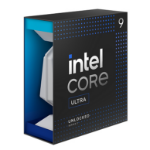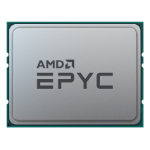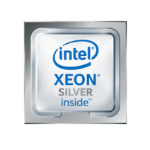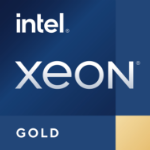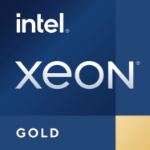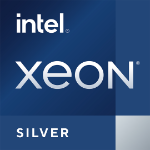AMD Ryzen 9 9950X3D processor 4.3 GHz 144 MB L2 & L3 Box
£674.86
£562.38
AMD Ryzen 9 9950X3D Gaming and Content Creation Processor, Boxed
More Information
| SKU | 100-100000719WOF |
|---|---|
| EAN | 0730143315555 |
| Manufacturer | AMD |
| Availability | Y |
| Product Family | Ryzen |
| Product Series | 9 |
Description
The ultimate 16-core desktop CPU with 2nd gen AMD 3D V-Cache™ Technology that can do it all with incredible performance for the most demanding gamers and creators.
Specifications
| Processor | |
|---|---|
| Processor generation | AMD Ryzen 9000 Series |
| Processor base frequency | 4.3 GHz |
| Processor manufacturer | AMD |
| Cooler included | No |
| Thermal Design Power (TDP) | 170 W |
| Processor cache | 144 MB |
| Processor model | 9950X3D |
| Processor threads | 32 |
| Processor operating modes | 64-bit |
| Processor boost frequency | 5.7 GHz |
| Processor lithography | 4 nm |
| Processor family | AMD Ryzen™ 9 |
| Processor cores | 16 |
| Processor socket | Socket AM5 |
| Processor cache type | L2 & L3 |
| Package type | Box |
| Memory | |
| Maximum internal memory supported by processor | 192 GB |
| Memory types supported by processor | DDR5-SDRAM |
| Memory clock speeds supported by processor | 3600,5600 MHz |
| Memory channels | Dual-channel |
| ECC | Yes |
| Graphics | |
| Discrete graphics card | No |
| On-board graphics card model | AMD Radeon Graphics |
| On-board graphics card | Yes |
| On-board graphics card base frequency | 2200 MHz |
| Discrete graphics card model | Not available |
| Power | |
| Thermal Design Power (TDP) | 170 W |
| Technical details | |
|---|---|
| PCI Express slots version | 5.0 |
| Supported instruction sets | AES, AVX, AVX 2.0, AVX-512, SSE, SSE2, SSE3, SSE4.1, SSE4.2, SSSE3 |
| Thermal Design Power (TDP) | 170 W |
| Market segment | Desktop |
| Processor cache type | L2 & L3 |
| Features | |
| Maximum number of PCI Express lanes | 28 |
| Thermal Design Power (TDP) | 170 W |
| PCI Express slots version | 5.0 |
| Supported instruction sets | AES, AVX, AVX 2.0, AVX-512, SSE, SSE2, SSE3, SSE4.1, SSE4.2, SSSE3 |
| Market segment | Desktop |
| I/O configuration | |
| USB version | 3.2 Gen 2 (3.1 Gen 2) |
| USB ports quantity | 4 |
| Operational conditions | |
| Minimum operating temperature | 95 °C |
| Packaging data | |
| Package type | Box |
Delivery Details
- UK distributors.
- Order before 4 pm for next-day delivery.
- Standard (2-3 days) £7.50
- Next Day £9.99
- Free standard delivery over £100
There are deivery surcharges to these postcodes:
| Postcode | Charge |
| IV3-40 | £20 |
| IV52-54 | £20 |
| IV63 | £20 |
| KW1-14 | £20 |
| PA10-40 | £20 |
| PH19-40 | £20 |
| PH50 | £20 |
| HS | £50 |
| IV41-51 | £50 |
| IV55-56 | £50 |
| KA27-28 | £50 |
| KW15-17 | £50 |
| PA41-49 | £50 |
| PA60-62 | £50 |
| PA76-78 | £50 |
| PH41-44 | £50 |
| ZE | £50 |
| IM | £50 |
| JE | £50 |
| GY | £50 |
| TR21-25 | £50 |
| BT | £20 |
Suggested Products
AMD EPYC 8124P processor 2.45 GHz 64 MB L3 Tray
Shop NowAMD EPYC 4584PX processor 4.2 GHz 128 MB L3
Shop NowIntel Core Ultra 9 285 processor 36 MB Smart Cache...
Shop NowAMD EPYC 4585PX processor 4.3 GHz 128 MB L3 Tray
Shop NowHPE Intel Xeon-Silver 4215R processor 3.2 GHz 11 M...
Shop NowHPE Intel Xeon-Silver 4215R (3.2 GHz/8-core/130 W)...
Shop NowLenovo Intel Xeon Gold 5220R processor 2.2 GHz 35....
Shop NowLenovo Intel Xeon Gold 5220R processor 2.2 GHz 35....
Shop NowLenovo Intel Xeon Gold 5220R processor 2.2 GHz 35....
Shop NowCisco Intel Xeon Gold 5220R processor 2.2 GHz 35.7...
Shop NowHPE Intel Xeon Silver 4510 processor 2.4 GHz 30 MB...
Shop NowIntel Core i9-14900 processor 36 MB Smart Cache Bo...
Shop NowIntel Core i9-14900KS processor 36 MB Smart Cache ...
Shop NowAMD Ryzen 9 9950X3D processor 4.3 GHz 144 MB L2 & ...
Shop NowAMD Ryzen 9 9900X3D processor 4.4 GHz 140 MB L2 & ...
Shop NowYou may also be interested in
| Product |
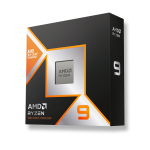
Bestseller
AMD Ryzen 9 9950X3D processor 4.3 GHz...
£674.86
£562.38
|
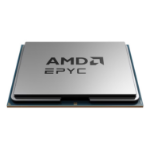 AMD EPYC 8124P processor 2.45 GHz 64 M...
AMD EPYC 8124P processor 2.45 GHz 64 M...
£609.28
£507.73
|
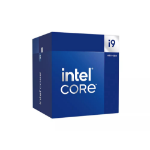
Recommended
Intel Core i9-14900 processor 36 MB Sm...
£558.37
£465.31
|
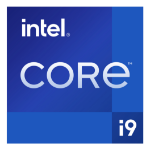
Popular
Intel Core i9-14900 processor 36 MB Sm...
£546.98
£455.82
|
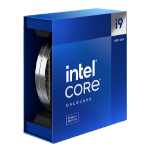
Hot Product
Intel Core i9-14900KS processor 36 MB...
£663.14
£552.62
|
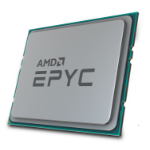 AMD EPYC 4584PX processor 4.2 GHz 128...
AMD EPYC 4584PX processor 4.2 GHz 128...
£577.73
£481.44
|
|---|---|---|---|---|---|---|
| SKU |
100-100000719WOF
|
100-000001135
|
BX8071514900
|
CM8071504820609
|
BX8071514900KS
|
100-000001481
|
| Manufacturer |
AMD
|
AMD
|
Intel
|
Intel
|
Intel
|
AMD
|
| Processor lithography |
up to 22nm
|
N/A
|
N/A
|
N/A
|
N/A
|
N/A
|
| Processor family |
AMD Ryzen 9
|
AMD EPYC
|
Intel Core i9
|
Intel Core i9
|
Intel Core i9
|
AMD EPYC
|
| Processor socket |
Socket AM5
|
Socket SP6
|
LGA 1700
|
LGA 1700
|
LGA 1700
|
Socket AM5
|
| Processor cores |
16
|
16
|
24
|
24
|
24
|
16
|
| On-board graphics adapter |
Y
|
N
|
Y
|
Y
|
Y
|
N
|
| Discrete graphics adapter |
N
|
N
|
N
|
N
|
N
|
N
|
| Cooler included |
N
|
N
|
Y
|
N/A
|
N
|
N/A
|
| Package type |
Box
|
Tray
|
Box
|
Tray
|
Box
|
N/A
|




